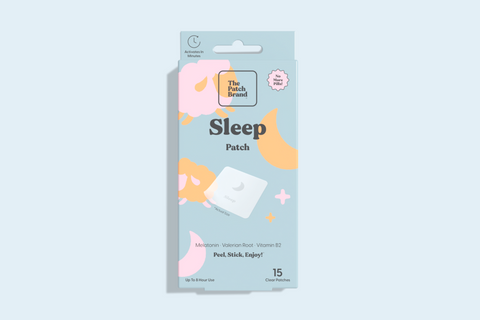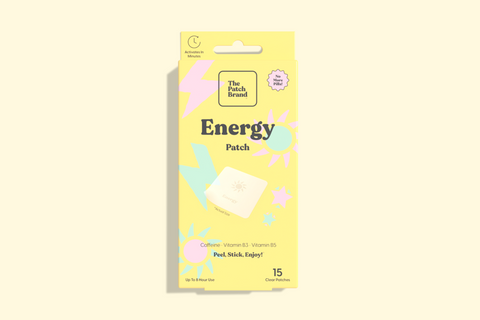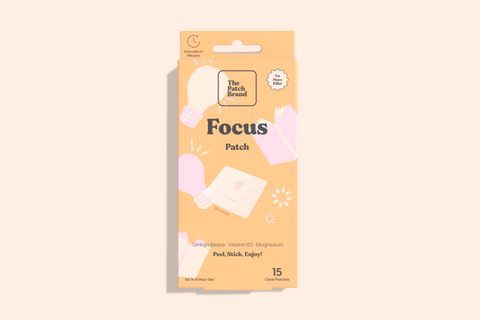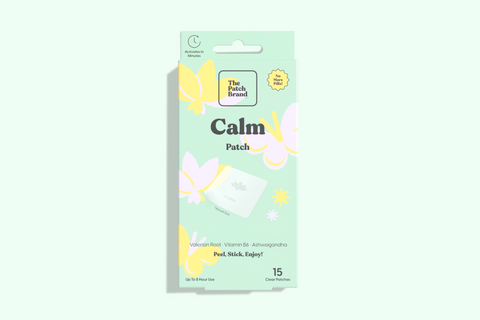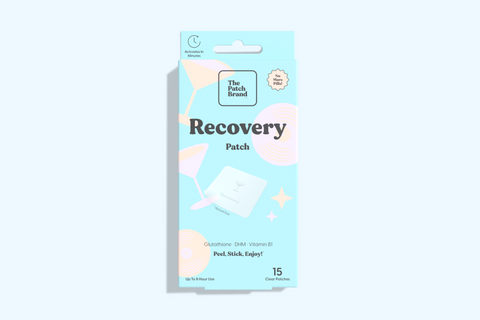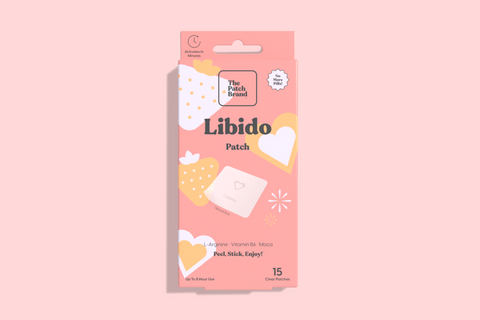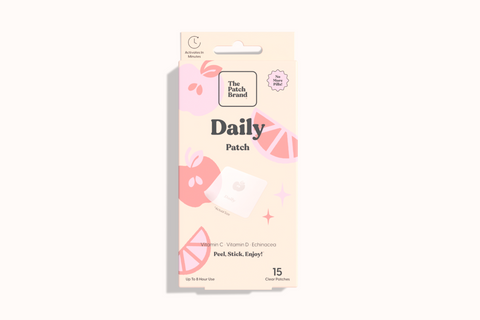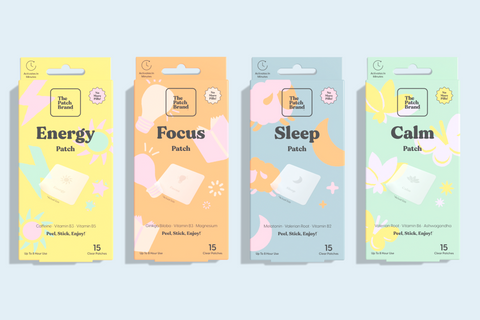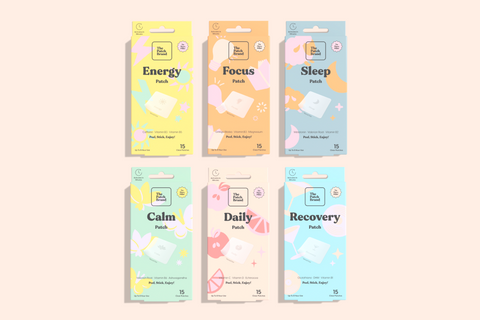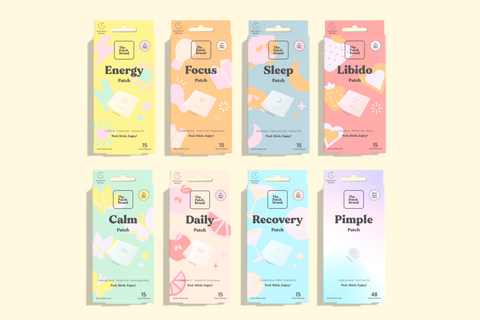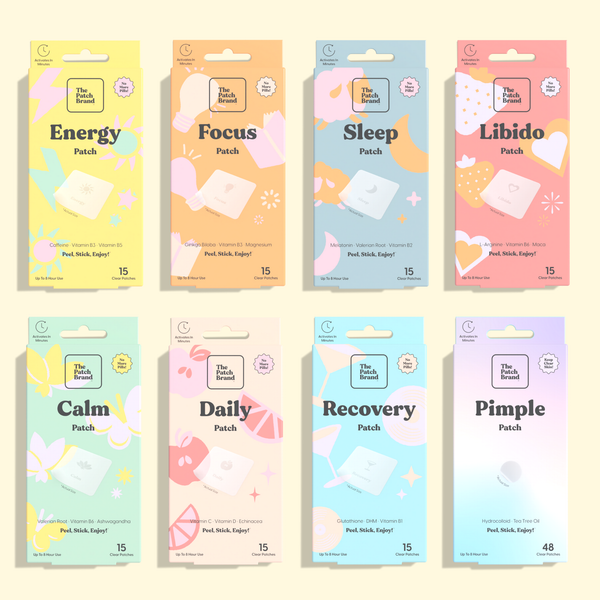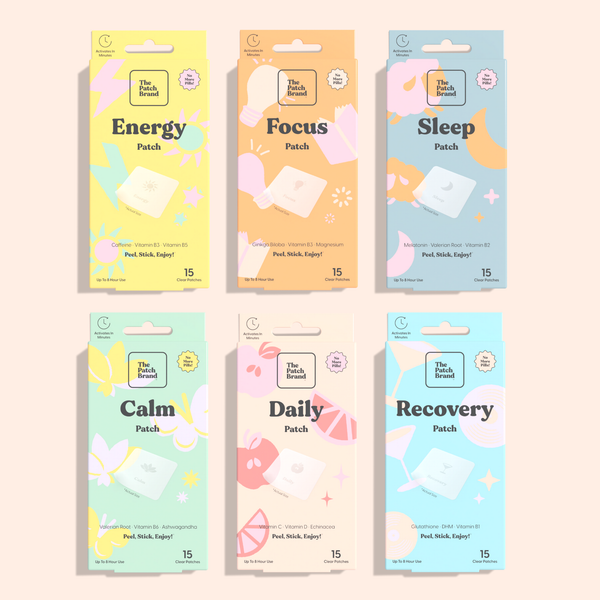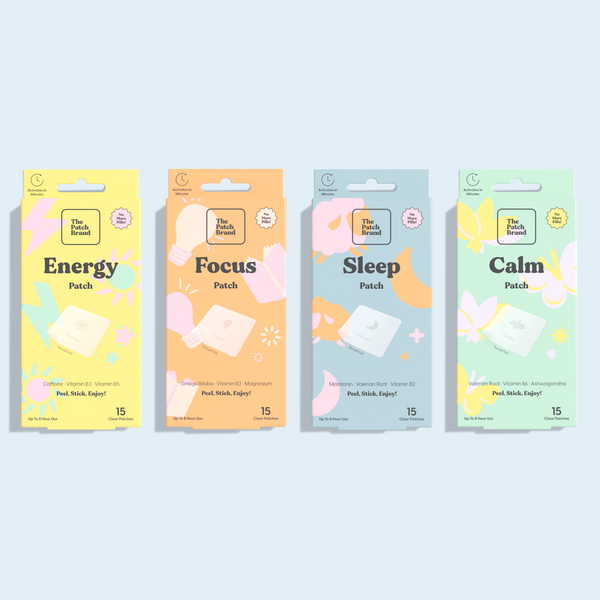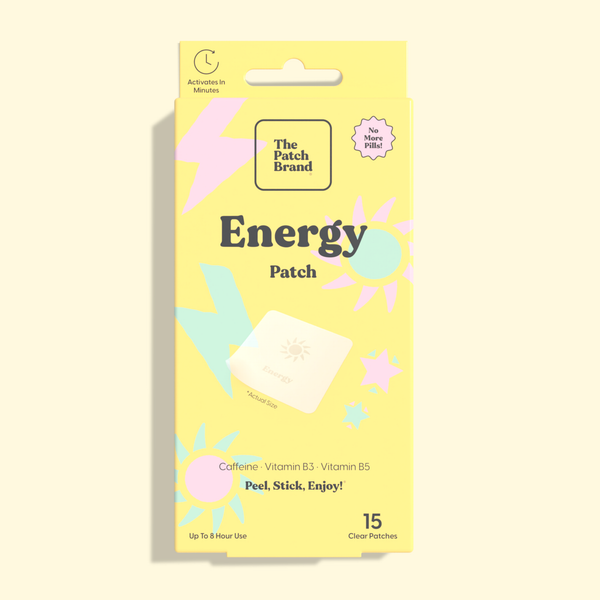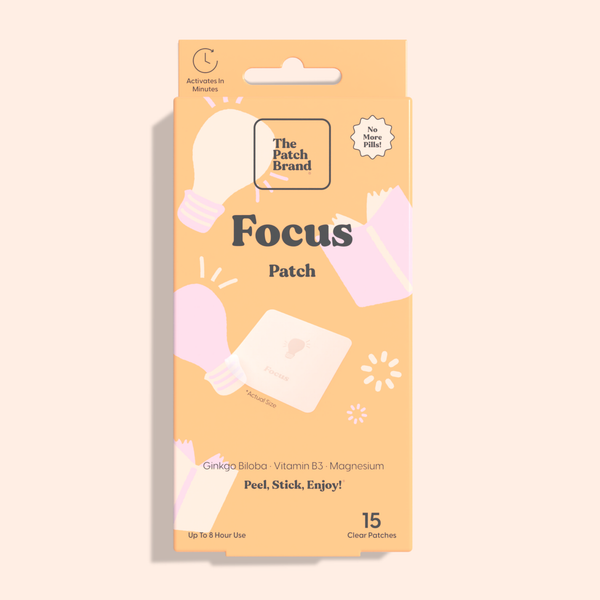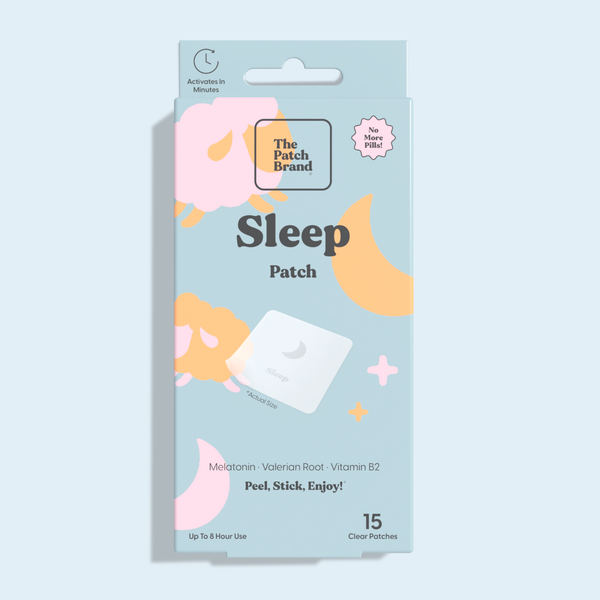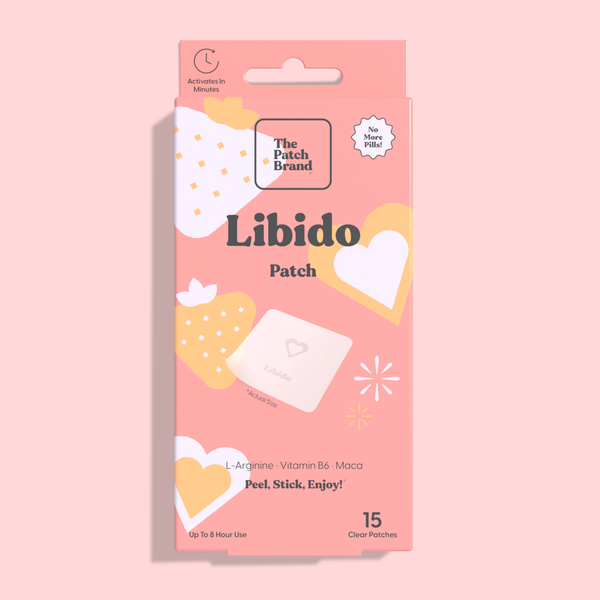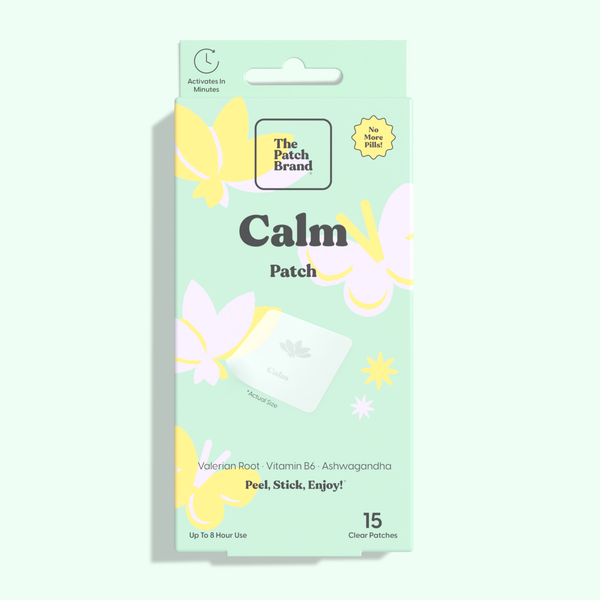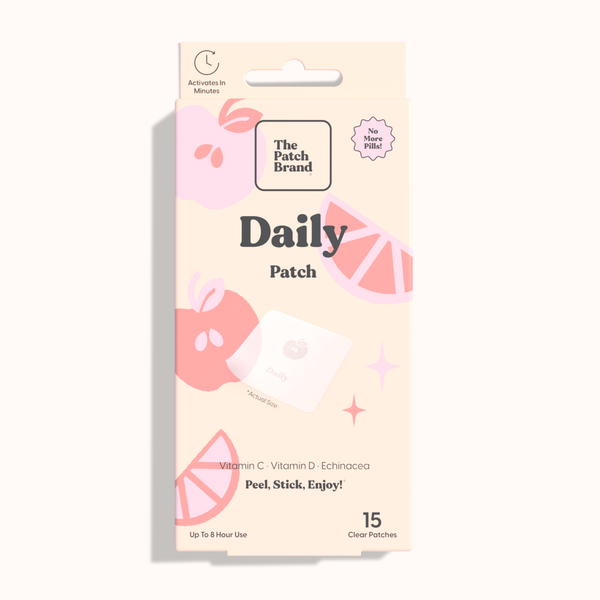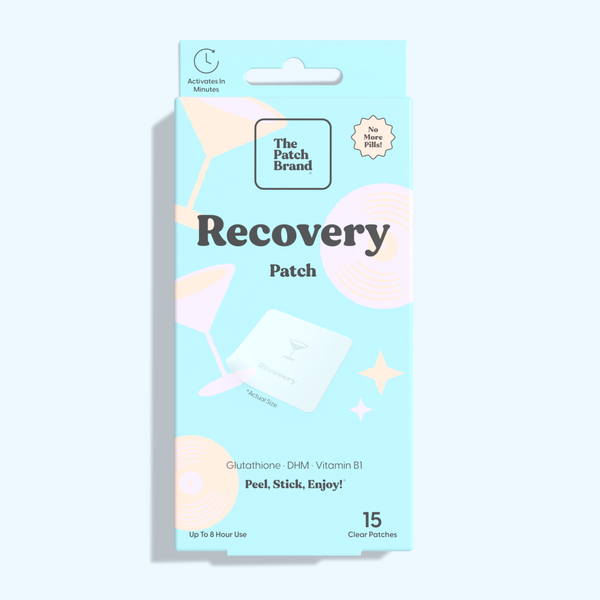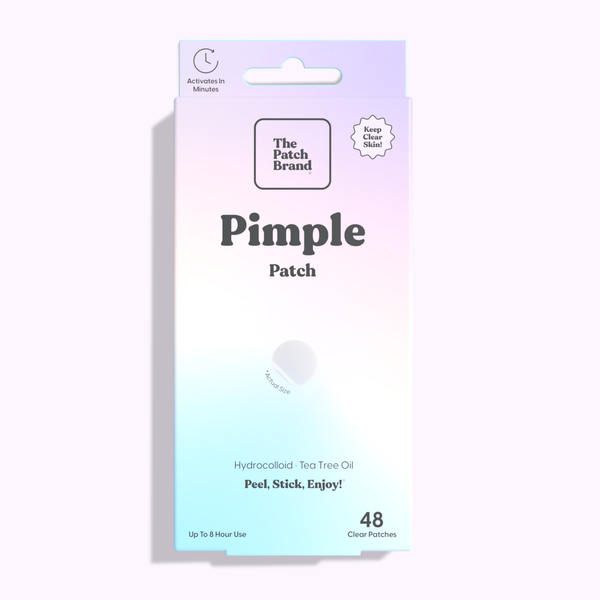Stress is a common experience that most people encounter at some point in their lives. It is an emotional and physical response to a challenging or threatening situation, and it can cause various negative effects on one's mental and physical well-being. Managing stress is crucial to maintaining a healthy and balanced lifestyle. Fortunately, there are many ways to cope with stress and reduce its negative impact. In this blog post, we will explore what stress is, the common causes and symptoms of stress, as well as several strategies to reduce stress and live a more balanced life, including the use of
stress-relieving patches.

Understanding Stress
Stress is a natural response to challenging or threatening situations, and it can be triggered by different sources. There are three types of stress: acute stress, episodic acute stress, and chronic stress. Acute stress is a short-term response to a specific event, such as an argument or a deadline. Episodic acute stress occurs when a person experiences acute stress frequently, and chronic stress is a continuous stress response to ongoing situations such as financial difficulties or work pressure.
The most common causes of stress are related to work, relationships, financial issues, and health concerns. Stress can manifest in both physical and emotional symptoms. Physical symptoms include headaches, muscle tension, digestive problems, chest pain, and fatigue. Emotional symptoms include anxiety, irritability, anger, depression, and difficulty concentrating.
Stress Coping Strategies
Stress can be managed through a combination of lifestyle changes, relaxation techniques, and cognitive strategies. Here are several
things that relieve stress:
Exercising Regularly
Regular exercise can help reduce stress levels and promote overall well-being. Exercise releases endorphins, which are natural mood boosters that can help reduce anxiety and improve mood. Physical activity also reduces muscle tension, lowers blood pressure, and improves sleep quality, all of which can reduce the impact of stress on the body. Incorporating exercise into daily routines, such as going for a walk, practicing yoga, or hitting the gym, can help individuals manage stress and improve their overall physical and mental health.
Eating A Healthy Diet
Eating a healthy and balanced diet can help reduce stress levels and improve overall well-being. A diet that is high in processed foods, sugar, and caffeine can exacerbate stress levels, while a diet that is rich in whole foods, such as fruits, vegetables, whole grains, and lean protein, can help reduce the impact of stress. Certain nutrients, such as magnesium and vitamin B, can also promote relaxation and reduce stress levels. By prioritizing a healthy diet, individuals can reduce the physical and emotional symptoms of stress and improve their overall quality of life.
Getting Enough Sleep
Getting adequate sleep is crucial for managing stress effectively. Lack of sleep can significantly worsen the symptoms of stress, such as irritability, concentration difficulties, and physical fatigue. Therefore, it is vital to ensure you get a consistent 7-8 hours of restful sleep each night. Establishing a regular bedtime routine can aid in improving sleep quality. This routine might include activities that promote relaxation, such as reading a book, taking a warm bath, or practicing meditation before bed.
Social Support
Maintaining social connections is an effective strategy for alleviating stress. Engaging with friends and family provides emotional support and can offer new perspectives on stressful situations. Regular interactions with people who understand and care about you can significantly reduce feelings of isolation and anxiety. If personal contacts are limited, joining a support group can be beneficial.
These groups provide a platform to connect with others facing similar challenges, allowing for the sharing of personal experiences and coping strategies. Additionally, support groups can offer a sense of community and belonging, which is crucial during times of stress. Whether through casual meet-ups, phone calls, or structured group meetings, fostering social ties can empower you to manage your stress more effectively by feeling supported and understood.
Time Management
Effective time management is essential for reducing stress. Poor time management can lead to a buildup of responsibilities, creating overwhelming pressure and heightening stress levels. To manage your time more effectively, prioritize your tasks based on urgency and importance. Create a realistic schedule that allocates specific times for work and breaks, allowing you to focus intensely while also avoiding burnout. Break larger tasks into smaller, manageable steps to prevent feeling overwhelmed and to facilitate progress tracking. Regular breaks enhance cognitive function and productivity, making it easier to tackle complex tasks. Additionally, learning to say no to non-essential tasks can preserve your time and reduce stress. You can achieve a better work-life balance by organizing your tasks and adhering to a structured plan.

Relaxation techniques
Deep breathing
Deep breathing is a remarkably simple yet profoundly effective method for alleviating stress and promoting a state of relaxation. This natural remedy involves a series of controlled inhalations and exhalations that influence physiological functions and mental states. Here are several key benefits of deep breathing:
-
Lowers Heart Rate and Blood Pressure: Stress commonly triggers a spike in heart rate and blood pressure, putting undue strain on the cardiovascular system. Deep breathing exercises act as a natural pacifier, gradually reducing these levels. By taking slow, deep breaths, the body activates the parasympathetic nervous system, which counteracts the stress-induced responses of the sympathetic nervous system. This shift not only brings the heart rate and blood pressure back to baseline but also facilitates a calming effect across the body, reducing the risks associated with hypertension and promoting cardiovascular health.
-
Reduces Muscle Tension: When stressed, the body tends to tense up, leading to muscle stiffness and discomfort, which can further aggravate stress. Deep breathing helps in loosening these muscle contractions, particularly in the neck, shoulders, and back areas that are prone to accumulating stress. As you breathe deeply, more oxygen flows to your muscles, easing tension and pain. This increased relaxation not only alleviates physical discomfort but also enhances mobility and prevents chronic conditions related to muscle tension such as headaches and fatigue.
-
Increases Oxygen Intake: Deep breathing enhances the capacity of your lungs, allowing for a greater intake of oxygen. This enriched oxygen supply is then circulated throughout the body, improving the efficiency of your organs and systems. Higher oxygen levels contribute to better energy production, enhanced cognitive functions, and a stronger immune response. Furthermore, this process helps in the detoxification of the body by promoting the removal of carbon dioxide and other waste products. Regularly practicing deep breathing not only boosts your overall health and vitality but also plays a crucial role in maintaining cellular health and longevity.
-
Regulates Breathing Patterns: Anxiety and stress often disrupt normal breathing patterns, leading to shallow or rapid breaths that can heighten discomfort and anxiety. Deep breathing exercises encourage a return to slow and deep breaths, thus stabilizing the breathing pattern. This regulation helps mitigate the physical and psychological effects of anxiety, leading to a more relaxed and calm demeanor. Over time, consistent practice of deep breathing can significantly decrease the incidence of panic attacks and other anxiety-related symptoms, fostering a greater sense of control and emotional stability.
By dedicating a few minutes each day to this practice, individuals can enjoy sustained benefits, including reduced stress, improved physical health, and a calmer, more centered mental state. Whether you are at home, at work, or in a public space, integrating deep breathing into your routine can transform your approach to stress.
Meditation
Meditation is a simple and accessible technique that can be practiced anywhere, at any time. To get started, find a quiet space, sit in a comfortable position, and focus on your breath. Allow thoughts to come and go without judgment. With regular practice, meditation can become a powerful tool for managing stress and promoting relaxation.
Yoga
Yoga is a mind-body practice that can help reduce stress levels and promote relaxation. Yoga combines physical postures with deep breathing and meditation, all of which are effective techniques for reducing stress and promoting overall well-being. Yoga postures can help reduce muscle tension, improve flexibility, and increase blood flow to the brain, all of which can reduce the physical symptoms of stress.
It also promotes relaxation and helps reduce anxiety and depression, making it an effective tool for managing stress. By incorporating yoga into a stress management routine, individuals can reduce stress levels, improve overall health, and achieve a greater sense of calm and well-being.
Massage Therapy
Massage therapy is a powerful tool for stress reduction, leveraging physical touch to soothe tense muscles and enhance circulation throughout the body. This practice not only alleviates physical tension but also promotes mental relaxation, contributing significantly to decreased anxiety levels and improved mood. Regular massage sessions can activate the body's relaxation response, counteracting the stress response and helping to stabilize the mood.
Additionally, massage therapy can increase the production of endorphins, serotonin, and dopamine—neurotransmitters that play vital roles in mood regulation. For those dealing with chronic stress, incorporating massage therapy into a regular wellness routine can provide both immediate relief and long-term benefits, helping to maintain a calmer state of mind and a more relaxed body.
Positive Self-Talk
Positive self-talk is a cognitive strategy that can significantly impact stress management by transforming negative thought patterns into positive ones. This involves consciously challenging pessimistic or critical thoughts and replacing them with affirmations or constructive feedback. When encountering a stressful situation, instead of defaulting to self-doubt or criticism, use positive affirmations to bolster confidence and maintain a hopeful outlook. For example, shifting from "I can’t handle this" to "I have the skills to manage this challenge" can change your emotional response to stress. Regularly practicing positive self-talk can build resilience against stress, enhance self-esteem, and foster a more optimistic perspective on life’s challenges, making stressful situations more manageable and less daunting.

Visualization
Visualization, or guided imagery, is a relaxation technique that involves imagining a serene and peaceful setting, which can significantly aid in reducing stress and promoting a sense of peace. By closing your eyes and picturing a tranquil environment, such as a quiet beach or a lush forest, you can engage your senses to deepen the relaxation effect.
This mental escape can help lower stress hormones, reduce body tension, and improve overall mood. Visualization not only helps in immediate stress reduction but also in enhancing the ability to handle future stressors by creating a mental reservoir of peaceful images to draw upon. Regular practice of visualization can serve as a quick and effective tool to achieve calmness during times of stress, thereby fostering both mental and emotional resilience.
Gratitude
Practicing gratitude is a profound way to combat stress and enhance emotional well-being. By focusing on the positive aspects of life and expressing thankfulness for them, you can shift your perspective away from negativity and complaints towards appreciation and positivity. Keeping a gratitude journal, where you write down three things you are grateful for each day, can help cultivate this habit. This practice trains the mind to recognize and appreciate the positive, even in challenging situations, which can significantly improve mood and reduce feelings of stress.
Stress-Relieving Vitamin Patches
In addition to lifestyle changes, relaxation techniques, and cognitive strategies, a
patch for stress relief can also help manage stress. These patches are designed to deliver a blend of vitamins and nutrients through the skin to provide a calming effect on the body and mind.
Stress relief patches contain vitamins such as vitamin B12, which can help reduce stress levels and improve mood. They may also include nutrients like magnesium and melatonin, which can help promote relaxation and improve sleep quality. Anxiety-relieving patches may contain natural ingredients like chamomile or lavender, which are known for their calming effects.
Using a stress-relieving patch is easy. Simply apply the patch to a clean and dry area of skin, such as the upper arm, and leave it on for the recommended time. The vitamins and nutrients will be absorbed through the skin and into the bloodstream.
Stress Relief Patch Benefits
-
Non-invasive: Stress relief patches provide a significant advantage as they are non-invasive and incredibly simple to apply. Unlike many medical treatments that require injections or surgery, these patches are merely placed on the skin. They are designed with user-friendly features, allowing anyone to use them without the need for professional assistance. This ease of use makes them highly accessible and eliminates any discomfort typically associated with more invasive stress relief methods.
-
Can be used anytime, anywhere: The design of stress relief patches allows them to be used discreetly and on the go. Whether you are in the middle of a hectic day at work, traveling, or engaged in daily chores, you can easily apply a patch and enjoy its benefits without disrupting your schedule. This aspect is particularly beneficial for people who find it challenging to carve out dedicated time for stress management practices like meditation or yoga.
-
Natural alternative to prescription medications: Many individuals are wary of the potential side effects associated with prescription medications. Stress relief patches offer a natural alternative, often containing herbal ingredients that are less likely to cause adverse effects. For those interested in natural health products, these patches provide a way to manage stress without the risks associated with synthetic drugs.
Their easy-to-use design and the ability to use them in various settings make them a versatile tool in the pursuit of a calmer, more balanced life. As the world continues to recognize the importance of mental health, these patches represent a forward step in accessible and user-friendly wellness solutions.
Stress is a common experience that can negatively impact one's mental and physical well-being. However, managing stress is possible through a combination of lifestyle changes, relaxation techniques, cognitive strategies, and stress-relieving
vitamin patches. By prioritizing stress management and implementing these strategies, one can
reduce stress levels, improve mood, and lead a healthier and more balanced life. Remember, stress relief is a journey, not a destination. Take small steps each day to reduce stress and improve overall well-being.


